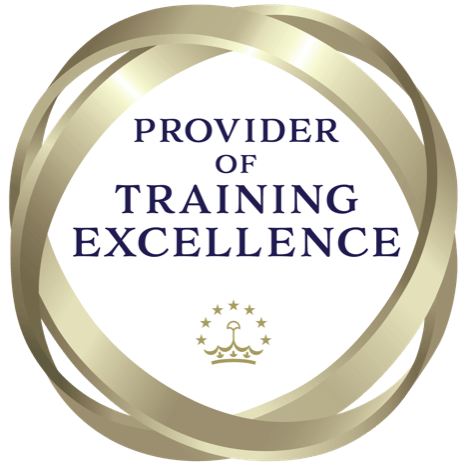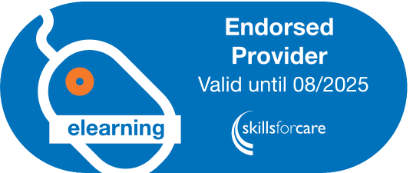TQUK Level 3 Award in Paediatric First Aid - Online Blended Part 1
Online Training Course



Video Playtime
5 hours and 35 minutes
Video Count
116 videos
Audio
English
Captions
English
Proof of Completion
Certificate
This Course Includes:
- Follows UK & ERC guidelines
- Endorsed by Skills for Care & TQUK
- 8.0 hrs CPD Certificate
- Evidence Based Training Certificate
- Instant printable wall certificate
- 24/7 on-demand video
- Access on mobile
- Weekly refresher video
- Expiration reminder
- Student manual - English, Spanish, Polish and Arabic
over 3 million certifications issued to date
Why ProTrainings?
Convenience
Train Anywhere, On Any Device
Master Quality
Expert Instructors for Every Subject
Speed
Same-Day Completion
Trusted
Compliant & Secure
Who needs this training?
Most people take this training as a requirement for their job or for their personal life. Whether you work in healthcare or another profession or are simply looking for a new qualification, ProTrainings has the course that is suitable for you! Online courses allow you to train at your own pace, in your own time.
Some professionals that may need a this course include:
- Childminders
- Teachers
- Nursery workers
- Au Pairs
- Nannies
- School nurse
More about this course
This course is part one online part of this regulated qualification. You will need to complete the practical part in order to receive the award.
This accredited qualification provides theoretical and practical training in First Aid techniques that are specific to infants aged 0 to 1, and children aged from 1 year old to 18 years old. Learners will become familiar with the role of the paediatric first aider and be able to assess and react appropriately to an emergency situation, such as a child or an infant who is unresponsive, has an airway obstruction or is suffering from shock.
Topics also included are wounds, fractures, dislocations, injuries to the head, neck, back, eyes, ears or nose, poisoning, bites or stings and electric shock.
This qualification consists of two units and is provided over a period of 2 days with a minimum contact time of 6 hours per unit.
The Statutory Framework for the Early Years Foundation Stage is a document published by The Department for Children, Schools and Families and applies to Early Years childcare within England, Wales and Northern Ireland. The Statutory Framework states that ‘at least one person who has a current paediatric first aid certificate must be on the premises at all times when children are present. There must be at least one person on outings who has a current paediatric first aid certificate.’ The TQUK Level 3 Award in Paediatric First Aid (RQF) is recognised as a qualification that fulfils this need.
To comply with current requirements in the childcare sector, you must take this qualification again after three years. This must be taken as the two days again, there is no shorter course if you have taken the course before.
All successful students will be issued with a Paediatric First Aid Certificate detailing their achievements. The childcare sector dictates, that to be valid when working in the childcare sector, learners must retake the Paediatric First Aid qualification before the expiry of 3 years from the date that the original qualification was achieved. Please contact ProTrainings for further information
All our first aid courses fully meet the latest UK and European Resuscitation Council Guidelines as per the HSE requirements.
Please be advised that the classroom course has a minimum age requirement of 14.
This course gives learners the opportunity to gain a formally recognised regulated qualification. If you require funding, a regulated qualification is often required. Phone us and we can advise if needed. If you choose our course leading to a regulated qualification, there are additional assessment criteria to be undertaken with an instructor and a small extra certification charge.
| Regulated Qualification Details | |
|---|---|
| Course Title: | TQUK Level 3 Award in Paediatric First Aid (RQF) |
| QAN: | 601/2885/9 |
| Level: | 3 |
| Credit Value: | 3 |
| TQT: | 22 |
| The Register of Regulated Qualifications | |
| Funding Information | |
Course Aims and Learning Outcomes:
Unit 1: Emergency Paediatric First Aid
1. Understand the role and responsibilities of the paediatric first aider
- 1.1 Identify the role and responsibilities of a paediatric first aider
- 1.2 Identify how to minimise the risk of infection to self and others
- 1.3 Differentiate between an infant and a child for the purposes of first aid
2. Be able to assess an emergency situation safely
- 2.1 Conduct a scene survey
- 2.2 Conduct a primary survey on an infant and a child
- 2.3 Summon appropriate assistance when necessary
3. Be able to provide first aid for an infant and a child who are unresponsive
- 3.1 Identify when to administer Cardio Pulmonary Resuscitation (CPR)
- 3.2 Demonstrate CPR using an infant and a child manikin
- 3.3 Justify when to place an infant or a child into the recovery position
- 3.4 Demonstrate how to place an infant and a child into the recovery position
- 3.5 Demonstrate continual monitoring of breathing for and infant and a child whilst they are in the recovery position
- 3.6 Identify how to administer first aid to an infant or a child who is experiencing a seizure
4. Be able to provide first aid for an infant and a child who are choking
- 4.1 Identify when choking is: Mild or Severe
- 4.2 Demonstrate how to administer first aid to an infant and a child who is choking
5. Be able to provide first aid to an infant or a child with external bleeding
- 5.1 Identify the severity of external bleeding for an infant and a child
- 5.2 Demonstrate how to administer first aid to an infant or a child with external bleeding
6. Know how to provide first aid to an infant or a child who is suffering from shock
- 6.1 Recognise when an infant or a child is suffering from shock
- 6.2 Identify how to administer first aid to an infant or a child who is suffering from shock
7. Know how to provide first aid to an infant or a child with bites, stings and minor injuries
- 7.1 Identify how to administer first aid for: • Bites • Stings • Small cuts • Grazes • Bumps and bruises • Small splinters • Nosebleeds
Unit 2: Managing paediatric illness, injuries and emergencies
1. Be able to administer first aid to an infant or a child with suspected injuries to bones, muscles and joints
- 1.1 Recognise a suspected: Fracture or dislocation and Strain or Sprain
- 1.2 Identify how to administer first aid for an infant or a child with a suspected: Fracture or dislocation and Strain or Sprain
- 1.3 Demonstrate how to apply a support sling and an elevated sling
2. Be able to provide first aid to an infant or a child with suspected head and spinal injuries
- 2.1 Recognise a suspected: Head Injury and Spinal Injury
- 2.2 Identify how to administer first aid for an infant or a child with a suspected head injury
- 2.3 Demonstrate how to administer first aid for an infant or a child with a suspected spinal injury
3. Know how to provide first aid to an infant or a child with conditions affecting the eyes, ears and nose
- 3.1 Identify how to administer first aid for an infant or child with a foreign body in the: Eye, Ear and Nose
- 3.2 Identify how to administer first aid for an infant or a child with an eye injury
4. Know how to provide first aid to an infant or a child with an acute medical condition or sudden illness.
- 4.1 Recognise suspected: • Diabetic emergencies • Asthma attack • Allergic reaction • Meningitis • Febrile convulsions
- 4.2 Identify how to administer first aid for an infant or a child who is suspected to be suffering from • Diabetic emergency • Asthma attack • Allergic reaction • Meningitis • Febrile convulsions.
5. Know how to provide first aid to an infant and a child who is experiencing extremes of body temperature.
- 5.1 Recognise when an infant or a child is suffering from extreme cold and extreme heat
- 5.2 Identify how to administer first aid for an infant or child who is suffering from: extreme cold • extreme heat
6. Know how to provide first aid to an infant or a child who has sustained an electric shock
- 6.1 Identify how to safely manage an incident involving electricity
- 6.2 Identify how to administer first aid for an infant or child who has suffered an electric shock
7. Know how to administer first aid to an infant or a child with burns or scalds
- 7.1 Identify how to recognise the severity of burns and scalds
- 7.2 Identify how to administer first aid for an infant or a child with burns and scalds
8. Know how to administer first aid to an infant or a child with suspected poisoning
- 8.1 Identify how poisonous substances can enter the body
- 8.2 Identify how to administer first aid for an infant or child with sudden poisoning
9. Be able to provide first aid to an infant or child with anaphylaxis
- 9.1 Recognise suspected anaphylaxis in an infant or a child
- 9.2 Identify how to administer first aid for an infant or a child with suspected anaphylaxis
- 9.3 Demonstrate the use of a training device adrenaline auto-injector.
This course comes with 8.0 hrs (24.0 class) of CPD, although the time to complete the course online may be less than this. Total course time includes 5 hours and 35 minutes of video training as well as knowledge reviews, final test, remedial help and reviewing downloaded material.
The content of this and all our courses has been independently certified as conforming to universally accepted Continuous Professional Development (CPD) guidelines and come with a Certified CPD Statement as well as a ProTrainings Certificate and for online courses an Evidence Based Learning statement.
- RegForm 15 TQUK Level 3 Award in Paediatric First Aid (RQF) Theoretical assessment open response not a final test
- Student Manual (V8.7) - Paediatric First Aid
- Adult CPR Flowchart
- Adult CPR Flowchart handout/poster
- Asthma UK weblink
- Catastrophic bleeding and trauma First Aid Guidance From ProTrainings.
- Child CPR Flowchart
- Child CPR Flowchart handout/poster
- Child and Infant CPR Flowchart Handout
- Childcare Accident Book
- Clean hand techniques leaflet
- Coronavirus (COVID-19) - link to the NHS website
- EpiPen Guide
- EpiPen patient information sheet
- Example of an accident report form for Paediatric courses - student handout or they can download from their dashboard
- Find out what other courses are available as video online, blended and classroom courses nationally - our course finder
- Free student first aid program leaflet
- Government Advice - Best Practice Hand Rub
- Government Advice - Best Practice Hand Wash
- HSE First Aid at Work Regulations
- HeartSine 350 Information Leaflet
- Home Emergency Contact Sheet
- How to register to call EMS by text
- Infant CPR Flowchart
- Infant CPR Flowchart handout/poster
- Jext Product Data Sheets
- Jext patient Information Sheet
- Link to our Concussion ad Brain injury course in association with Headway, a head injury charity
- Link to the HSE website
- Meningitis Now website with many leaflets and resources link
- NHS Choices Web link
- Oxygen User Instructions - Gas rentals are available from ProTrainings, contact us for more information
- Oxygen and Analgesic gases from ProTrainings
- ProTrainings - Using an AED Leaflet
- ProTrainings Defibrillator eGuide
- RIDDOR link to the HSE guide
- Sign up for free Student First Aid - use code SCH-376-61-571
- Student Manual (V7.0) - First Aid - Arabic
- Student Manual (V7.0) - First Aid - Spanish
- Student Manual (V8.3) - Pierwsza Pomoc w Pracy Ksiazka studenta - Polish
- Student Manual (V8.6) - Anatomy and Physiology Human Body
- Student Manual (V8.6) - First Aid - Welsh
- Student Manual (V8.7) - Planning in the Moment in Early Years
- Student Manual V8.6 - First Aid - Dutch
- Student Manual V8.6 - First Aid - Portuguese
- Student manual V8.6 - First Aid - French
- Student manual V8.6 - First Aid - Ukrainian
- Student manual V8.6 - First Aid Manual Italian
- Visit the First Aid Show free for first aid and medical videos
- Web link to the Joint Epilepsy Council website - JEC
- Workplace Accident Book
- Workplace Emergency Contact Sheet
- Woundclot - haemostatic gauze for all types of bleeding
- Woundclot leaflet with price list - 2025
Reviews
Frequently Asked Questions
I work in a childcare setting, can I complete some of my first aid training online?
Yes, you can with ProTrainings complete half of your course using video online training and then complete day two locally at your workplace or in one of our nationwide centres. By completing the Paediatric First Aid Level 3 course in a blended format, means you only attend one day in the class for Trade body or regulated qualifications.
What is CPD and why is having Certified CPD important?
CPD stands for Continuous Professional Development and is required in many business sectors. Even if you do not require a set CPD credit level, having Certifed CPD ensures the quality of training. ProTrainings are the highest gold standard of CPD ensuring that all courses are externally verified and mapped to the highest levels.
What is "SCORM ready" and will courses run on a LMS?
SCORM Ready means that online courses can run on any compatible Learning Management System (LMS). SCORM courses run seamlessly on your existing LMS system without a separate login so staff only login using the existing company system. ProTrainings online courses have an advanced SCORM ready system to give more features than any other company.
Do I receive a certificate after completing your online training?
Yes, when you complete the online course you will be able to download and print a compliant completion certificate, evidenced-based learning statement to confirm course content and a certified CPD statement. There is no extra charge for the certificate. You can also buy a printed certificate to be posted to you for a small extra fee.
Group Trainings for your Organisation


















